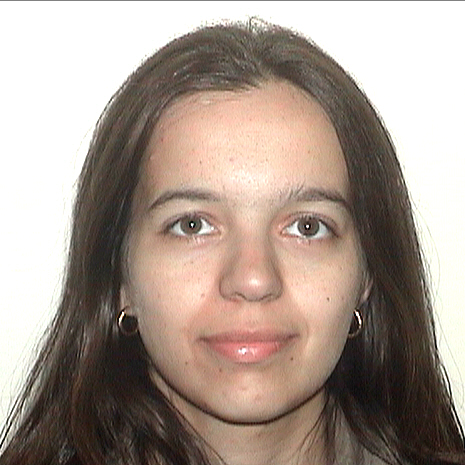Biological Sciences
 Fernando Vonhoff
Fernando Vonhoff
Now Assistant Professor at UMBC
About
Born in Mexico, I am a biologist interested in brain development and function. I use fruit flies as a model to study human neurological diseases. I use active learning methods in the classroom and the research lab
Research Interests
Neuroscience Developmental Biology Cell Biology Genetics
Teaching Interests
Genetics Neuroscience Developmental Biology Cell Biology
Presentations
ABRCMS PosterThe role of APPL in the development and degeneration of the neuronal motor network in Drosophila ABRCMS Indianapolis, IN (Nov 14, 2018)
STEM Research and Career Symposium Poster Using Drosophila to validate candidate genes involved in human motoneuron degeneration Emory University Atlanta, GA (Oct 10, 2018)
URCAD PosterThe role of APPL in the development and degeneration of the neuronal motor network in Drosophila University of Maryland Baltimore County Baltimore, MD (Apr 25, 2018)
URCAD Poster Using Drosophila to validate candidate genes involved in human motoneuron degeneration University of Maryland Baltimore CountyBaltimore, MD (Apr 25, 2018)
 Nykia Walker
Nykia Walker
Now Assistant Professor of Biological Sciences at UMBC
Dr. Nykia Walker attended the University of Pennsylvania, where she graduated with a B.A. in biology in 2006 and a M.S. in Infectious Diseases & Immunology in 2007. Upon completing her Master’s Degree, she worked as a biochemist in the research laboratories of Merck and Co. for eight years. She went on to receive her Ph.D. in Cell Biology, Neuroscience and Physiology in 2018 from the Rutgers School of Graduate Studies at New Jersey and to work as a post-doc the University of Chicago’s Ben May Department for Cancer Research, before starting in the UMBC Department of Biological Sciences in Spring 2021.
For more information about the Walker Lab, please email Nykia Walker at ndwalker@umbc.edu.
Chemistry and Biochemistry
Joseph Bennett
Now Assistant Professor of Chemistry and Biochemistry at UMBC
Postdoc, Rutgers University 2010-2012
Ph.D. University of Pennsylvania 2003-2009
B.S. Drexel University 1998-2003
Professional Interests
Our research is aimed to solve one of the grand challenges in modern chemistry: how to discover and design new functional materials that can be integrated into industrial importance devices, or serve as the basis for innovative new types of transformative technologies. We use techniques common to computational chemistry and informatics to provide new functional materials to address societal issues like energy independence and environmental sustainability; by combining rational chemical design, database mining, and first-principles calculations we can survey the properties of known and as yet to be synthesized families of solids. This helps us to gauge which known materials would benefit from a more thorough re-examination and which unknown materials would make exceptional candidates for synthesis and characterization. This approach relies heavily on concepts borrowed from inorganic chemistry, where the interplay of ionic radii, spin/oxidation state, and coordination environment help guide us towards exploring nature’s missing materials.
We use DFT methods to create structure-property relationships of a wide variety of materials classes such as metals, semiconductors, oxides, chalcogenides, nitrides, carbides, pnictides, and intermetallics to name a few, and connect the results of our calculations to available experimental data. Most of our projects are focused on determining what happens to both bulk and surface properties as the chemical environment is changed. For example, materials will behave differently in vacuum than they will in water, and they’ll go on to behave even more differently in the presence of an electrolyte! But what about replacing ions in a solid material? Substituting S2- for O2- in a complex metal oxide such as a perovskite doesn’t drastically change the overall oxidation states of the metals, but it will change the bond lengths, the size of the unit cell and the degree of electron sharing, which can all be computed with DFT.
Selected Publications:
DFT Computed Dielectric Response and THz Spectra of Organic Co-Crystals and Their Constituent Components. JW Bennett, ME Raglione, SM Oburn, LR MacGillivray, MA Arnold, SE Mason Molecules 24 959 (2019)
Methane Dissociation on alpha-Fe2O3 (0001) and Fe3O4 (111) Surfaces: First-Principles Insights into Chemical Looping Combustion JW Bennett, X Huang, Y Fang, DM Cwiertny, VH Grassian, SE Mason Phys. Chem. C 123 6450-6463 (2019)
Dissolution of Complex Metal Oxides from First-Principles and Thermodynamics: Cation Removal from the (001) Surface of Li(Ni1/3Mn1/3Co1/3)O2 JW Bennett, D Jones, X Huang, RJ Hamers, SE MasonEnviron. Science & Technology 52 5792-5802 (2018)
Systematic Study of Aluminum Nanoclusters and Anion Adsorbates JW Bennett, JL Bjorklund, TZ Forbes, SE Mason Inorganic Chemistry 56 13014-13028 (2017)
Pseudopotentials for high-throughput DFT calculations KF Garrity, JW Bennett, KM Rabe, D Vanderbilt Computational Materials Science 81 446-452 (2014)
Hexagonal ABC Semiconductors as Ferroelectrics JW Bennett, KF Garrity, KM Rabe, D Vanderbilt Physical Review Letters 109 167602 (2012)
Half-Heusler Semiconductors as Piezoelectrics A Roy, JW Bennett, KM Rabe, D Vanderbilt Physical Review Letters 109 037602 (2012)
New Highly Polar Semiconductor Ferroelectrics Through d8 Cation-O Vacancy Substitution into PbTiO3: A Theoretical Study JW Bennett, I Grinberg, AM Rappe J. American Chemical Society 130 17409-17412 (2008)
